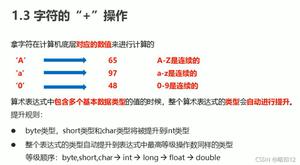ES6 对象扩展 链判断运算符 和 Null 判断运算符
链判断运算符【?.】
如果要读取对象的某个属性,往往需要判断一下该对象是否存在。比如要读取 message.body.user.firstName,安全的写法是写成下面这样。
const firstName = (message && message.body
&& message.body.user
&& message.body.user.firstName) || 'default';
这样的层层判断非常麻烦,因此 ES2020 引入了“链判断运算符”(optional chaining operator)?.,简化上面的写法。
const firstName = message?.body?.user?.firstName || 'default';Null 判断运算符【??】
读取对象属性的时候,如果某个属性的值是null或undefined,有时候需要为它们指定默认值。常见做法是通过||运算符指定默认值。
const headerText = response.settings.headerText || 'Hello, world!';const animationDuration = response.settings.animationDuration || 300;
const showSplashScreen = response.settings.showSplashScreen || true;
上面的三行代码都通过 || 运算符指定默认值,但是这样写是错的。开发者的原意是,只要属性的值为null或undefined,默认值就会生效,但是属性的值如果为空字符串或 false 或 0,默认值也会生效。
为了避免这种情况,ES2020 引入了一个新的 Null 判断运算符 ??。它的行为类似 ||,但是 只有运算符左侧的值为 null 或 undefined 时,才会返回右侧的值。
const headerText = response.settings.headerText ?? 'Hello, world!';const animationDuration = response.settings.animationDuration ?? 300;
const showSplashScreen = response.settings.showSplashScreen ?? true;
上面代码中,默认值只有在属性值为 null 或 undefined 时,才会生效。
这个运算符的一个目的,就是跟链判断运算符?.配合使用,为 null 或 undefined 的值设置默认值。
const animationDuration = response.settings?.animationDuration ?? 300;上面代码中,response.settings 如果是 null 或 undefined,就会返回默认值300。
这个运算符很适合判断函数参数是否赋值。
function Component(props) { const enable = props.enabled ?? true;
// …
}
上面代码判断 props 参数的 enabled 属性是否赋值,等同于下面的写法。
function Component(props) { const {
enabled: enable = true,
} = props;
// …
}
以上是 ES6 对象扩展 链判断运算符 和 Null 判断运算符 的全部内容, 来源链接: utcz.com/z/264694.html







